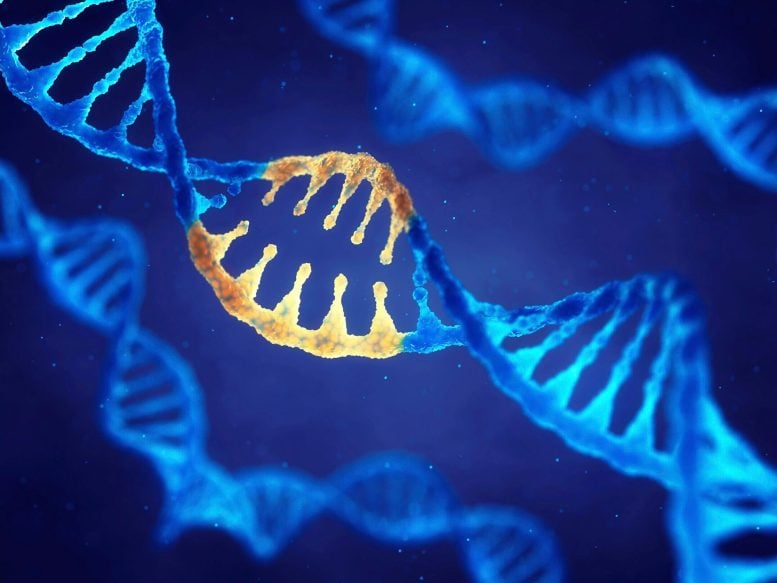CRISPR Gene Editing: Inserting Entire Genes Into Human DNA

Table of Contents
The Mechanics of CRISPR-Mediated Gene Insertion
Understanding CRISPR-Cas9
CRISPR-Cas9, the most widely used CRISPR system, acts as a programmable molecular scissor. It consists of two key components: the Cas9 enzyme, a nuclease that cuts DNA, and a guide RNA (gRNA). The gRNA is designed to be complementary to a specific target DNA sequence within the human genome. This targeted approach allows for precise gene editing.
- Creating a Guide RNA: Scientists design a gRNA molecule with a sequence that matches the target DNA region where the new gene needs to be inserted. This gRNA then guides the Cas9 enzyme to the precise location.
- Cas9-Mediated Double-stranded Break: Once the gRNA identifies the target DNA sequence, the Cas9 enzyme creates a double-stranded break (DSB) at that specific location.
- DNA Repair Mechanisms: The cell's natural DNA repair mechanisms kick in to fix this break. Two main pathways are involved: Non-homologous end joining (NHEJ) and homology-directed repair (HDR). NHEJ is an error-prone pathway that often leads to insertions or deletions, while HDR offers a more precise method for gene insertion.
Utilizing Homology-Directed Repair (HDR) for Gene Insertion
HDR is the crucial repair pathway for successful gene insertion. It utilizes a donor DNA template containing the desired gene to guide the repair process.
- Donor DNA Template: A DNA template carrying the gene to be inserted, along with flanking sequences homologous to the target site, is introduced into the cell.
- Precise Integration: During HDR, the cell uses the donor DNA template as a blueprint to accurately repair the DSB. This results in the precise integration of the desired gene into the target location in the genome.
- Challenges with HDR Efficiency: HDR is less efficient than NHEJ, making it challenging to achieve high rates of successful gene insertion. Researchers are actively working to improve HDR efficiency through various strategies.
Alternative CRISPR Systems for Gene Insertion
While CRISPR-Cas9 is widely used, other CRISPR systems offer potential advantages for gene insertion.
- Base Editors: These systems can make precise single-base changes without creating a DSB, potentially reducing off-target effects.
- Prime Editors: Prime editors combine the functions of reverse transcriptase and Cas9, allowing for more versatile gene editing, including insertions and deletions without the need for a DSB.
- Limitations and Ongoing Research: These newer systems are still under development, and their efficiency and specificity are areas of ongoing research.
Applications of CRISPR Gene Insertion in Human Therapy
Treating Genetic Diseases
Gene insertion therapy holds immense promise for treating a wide range of genetic diseases caused by faulty genes.
- Cystic Fibrosis: Inserting a functional copy of the CFTR gene could potentially correct the defect responsible for cystic fibrosis.
- Hemophilia: Inserting the gene for the missing clotting factor could provide a potential cure for hemophilia.
- Ongoing Clinical Trials: Numerous clinical trials are underway exploring the use of CRISPR gene insertion for various genetic disorders.
Gene Augmentation Therapies
Beyond correcting faulty genes, CRISPR-mediated gene insertion offers opportunities for gene augmentation, enhancing existing functions.
- Enhancing Immune Responses: Inserting genes that boost immune cell activity could enhance the body's ability to fight cancer or infections.
- Boosting Metabolic Pathways: Introducing genes that improve metabolic efficiency could be beneficial in treating metabolic disorders.
- Ethical Implications: The ethical implications of gene augmentation therapies need careful consideration, especially regarding potential unintended consequences and equitable access.
Challenges and Limitations
Despite its potential, CRISPR gene insertion faces several challenges:
- Off-Target Effects: CRISPR-Cas9 can sometimes cut DNA at unintended locations, leading to off-target effects.
- Delivery Methods: Efficient and safe delivery of CRISPR components to target cells remains a significant challenge.
- Immune Responses: The body's immune system might recognize and attack CRISPR components, hindering the treatment's effectiveness.
- Ethical Considerations: Germline editing, where changes are heritable, raises serious ethical concerns.
Future Directions of CRISPR Gene Insertion Technology
Improving Efficiency and Specificity
Ongoing research aims to enhance the precision and efficiency of CRISPR gene insertion.
- Guide RNA Design: Improvements in gRNA design are leading to more specific targeting and reduced off-target effects.
- Cas9 Variants: Engineered Cas9 variants with improved properties are being developed.
- Advanced Delivery Systems: Researchers are exploring novel delivery methods like viral vectors and nanoparticles.
- Artificial Intelligence: AI is being employed to optimize CRISPR systems and predict potential off-target effects.
Expanding Therapeutic Applications
CRISPR gene insertion technology has the potential to revolutionize treatment for various diseases:
- Cancer Therapy: Inserting genes that enhance the immune system's ability to target cancer cells.
- Infectious Disease Treatment: Engineering resistance to viral or bacterial infections.
- Regenerative Medicine: Promoting tissue regeneration and repair.
Addressing Ethical Concerns
Responsible development and application of CRISPR technology require addressing ethical considerations:
- Public Engagement: Open dialogue and public education are essential for responsible innovation.
- Regulatory Oversight: Strict regulatory frameworks are needed to ensure the safety and ethical use of CRISPR technology.
- Ethical Guidelines: Clear guidelines and ethical frameworks are needed to guide research and clinical applications.
Conclusion
CRISPR gene editing, particularly its capacity for inserting entire genes into human DNA, holds immense promise for revolutionizing gene therapy and treating a wide range of genetic diseases. While challenges remain, ongoing research and technological advancements are paving the way for safer, more efficient, and more widely applicable gene insertion techniques. The potential of CRISPR gene editing is vast, and continued investment in this transformative technology will undoubtedly lead to significant breakthroughs in human health. Learn more about the exciting possibilities of CRISPR gene editing and its impact on the future of medicine.

Featured Posts
-
 Ninja 500 Series Bersolek Investasi Di Atas Rp 100 Juta
May 30, 2025
Ninja 500 Series Bersolek Investasi Di Atas Rp 100 Juta
May 30, 2025 -
 Boesen Chosen As Grand View University Commencement Speaker
May 30, 2025
Boesen Chosen As Grand View University Commencement Speaker
May 30, 2025 -
 Kan Kasper Dolberg Score 35 Mal Pa En Saeson En Realistisk Vurdering
May 30, 2025
Kan Kasper Dolberg Score 35 Mal Pa En Saeson En Realistisk Vurdering
May 30, 2025 -
 Gorillaz 25th Anniversary House Of Kong Exhibition Information
May 30, 2025
Gorillaz 25th Anniversary House Of Kong Exhibition Information
May 30, 2025 -
 Live Music Stocks Surge Pre Market Monday
May 30, 2025
Live Music Stocks Surge Pre Market Monday
May 30, 2025
Latest Posts
-
 Munichs Bmw Open 2025 Zverev Battles Griekspoor In Quarter Finals
May 31, 2025
Munichs Bmw Open 2025 Zverev Battles Griekspoor In Quarter Finals
May 31, 2025 -
 May Day Rally In Kingston Images Show Strength And Solidarity Daily Freeman
May 31, 2025
May Day Rally In Kingston Images Show Strength And Solidarity Daily Freeman
May 31, 2025 -
 Bmw Open 2025 Zverev Griekspoor Quarter Final Showdown In Munich
May 31, 2025
Bmw Open 2025 Zverev Griekspoor Quarter Final Showdown In Munich
May 31, 2025 -
 Indian Wells Surprise Zverevs First Match Exit And His Honest Assessment
May 31, 2025
Indian Wells Surprise Zverevs First Match Exit And His Honest Assessment
May 31, 2025 -
 Trump Administration Loses Key Advisor Elon Musks Resignation Explained
May 31, 2025
Trump Administration Loses Key Advisor Elon Musks Resignation Explained
May 31, 2025
